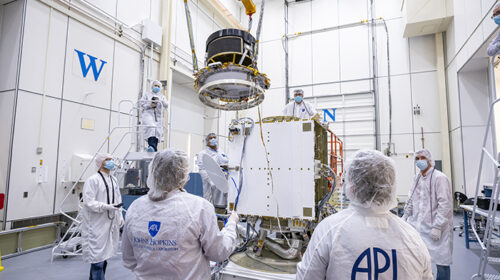Global Next-gen Aircraft Propulsion System Market to Reach $88.28 Billion by 2035
The global next-gen aircraft propulsion system market is projected to reach $88.28 billion by 2035,according to CRI’s new report. The study also highlights that the market is set to witness a CAGR of 18.11% during the period 2025-2035.
https://www.cri-report.com/product/next-gen-aircraft-propulsion-system-market-a-global-and-regional-analysis-and-forecast-2025-2035/
The next-gen aircraft propulsion system is an all-electric aircraft system. The next-gen aircraft propulsion system is going to be a much safer and more efficient option in aircraft propulsion. This type of propulsion system is expected to have significantly less impact on the environment in comparison to the present scenario. Over the years it has been observed by research that the used of electric aircraft can reduce the CO2e emissions significantly. Hence, a steady increase has been observed in the electrification of aircraft systems. Further, research on hydrogen, solar, and electrical propulsion, and investments in electric, hybrid, or hydrogen-based aircraft designs.
Haidar Ali, Lead Analyst, states, “” Increasing number of airline passengers has led to the global aviation community working to counteract the negative environmental effects of air travel – especially through nitrous oxide and carbon reduction, as well as the decrease of noise pollution.”
Key insights are drawn from in-depth interviews with the key opinion leaders of more than 15 leading companies, market participants, and vendors. The key players profiled in the report include Airbus S.A.S, Rolls-Royce Holdings plc., Boeing Co, Cranfield Aerospace Solutions 3W International GmbH, General Electric Company, GKN Aerospace Service Limited, Honeywell International Inc., Leonardo S.p.A., Lockheed Martin Corporation, MagniX, Rolls-Royce Holdings plc., Safran S.A., Siemens AG, The Raytheon Company, and Israel Aerospace Industries.
How can market intelligence on next-gen aircraft propulsion system add value to your organization’s decision-making process?
• Product / Innovation Strategy: The product segment helps the reader in understanding the different types of propulsion systems and their market potential globally. Moreover, the study provides the reader a detailed understanding of propulsion systems (cross segmentation of ‘propulsion type’ with ‘aircraft type’) with respect to end user (i.e., military, government, and commercial and civil) and component.
• Growth / Marketing Strategy: Companies operating in the global next-gen aircraft propulsion system market are developing innovative products to enhance the capabilities of their product offerings. Growth/marketing strategies will help the readers in understanding the revenue-generating strategies adopted by the players operating in the global next-gen aircraft propulsion system market.
• Competitive Strategy: Players analyzed and profiled in the study involve Original Equipment Manufacturers (OEMs) and component providers that capture maximum share in the global next-gen aircraft propulsion system market. Moreover, a detailed competitive benchmarking of the players operating in global next-gen aircraft propulsion system market has been done that will help the reader to understand how players stack against each other, presenting a clear market landscape. Additionally, comprehensive competitive strategies such as partnerships, agreements, and collaborations will aid the reader in understanding the untapped revenue pockets in the market.
Market Segmentation of Next-Gen Aircraft Propulsion System
• Propulsion Type: The global next-gen aircraft propulsion system market is segmented into all-electric, hybrid-electric, turboelectric, hydrogen propulsion and solar propulsion. Among these propulsion types, hybrid-electric propulsion is expected to attain high investments in the future due to the high adoption rate in commercial aviation industry. In 2025, hybrid-electric is expected to acquire the highest market value of $8.88 billion and is expected to grow to $47.08 billion by 2035 at a CAGR of 18.16% during the forecast period.
• Application: The commercial and civil industry is undergoing significant growth, and the widespread use of Aircraft for several applications. Moreover, with the increasing deployment of UAVs in applications such as mapping, surveying, and inspection, among others by several companies is expected to drive the demand for next-gen propulsion systems. In 2025, the commercial and civil segment is expected to acquire the highest market value of $14.74 billion and is expected to grow to $81.85 billion by 2035 at a CAGR of 18.70% during the forecast period.
• Component: Energy storage and supply systems include batteries, hydrogen fuel cells and solar cells. With the increasing advancements in these energy storage and supply systems to enable sustainable air travel, they are expected to progress at a significant rate. In 2025, the energy storage and supply systems component are expected to acquire the market value of $1.63 billion and is expected to grow to $10.52 billion by 2035 at a CAGR of 20.47% during the forecast period.
Key Questions Answered in the Report
• What are the major drivers, challenges, and opportunities behind the demand for the global next-gen aircraft propulsion system market during the forecast period, 2025-2035?
• Who are the key players in the global next-gen aircraft propulsion system market, and what is the competitive benchmarking?
• What are the new strategies being adopted by the existing market players to make a mark in the industry?
• How is each segment of the global next-gen aircraft propulsion system market expected to grow during the forecast period, and what is the revenue anticipated to be generated by each of the segments by the end of 2035?
• What are the trends in the global next-gen aircraft propulsion system market across different countries? What are the revenue estimates in 2025, and what are the estimates for 2035?
• Which country is expected to contribute the most to the global next-gen aircraft propulsion system market during the forecast period?

